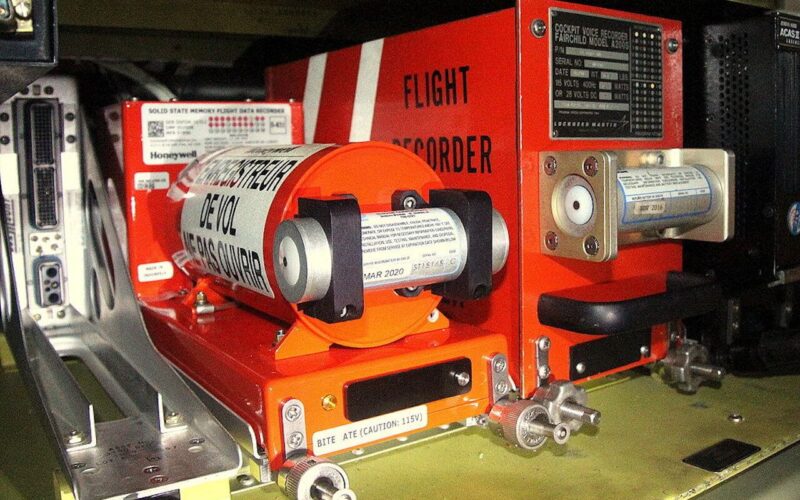As Chinese investigators scour the wreckage of flight MU5735 for the black boxes that will provide vital clues to the crash, AeroTime takes a closer look at the black boxes, and what everyone should know about them.
What is a black box?
A black box, or flight recorder, is a heavily protected recording device, similar to a hard disk or a memory card. There are usually two on commercial airliners – the Flight Data Recorder (FDR) records relevant flight data, while the Cockpit Voice Recorder (CVR) records conversations in the cockpit.
History of the black box
The black box was born 69 years ago on March 17, 1953.
From 1952 to 1954, the world’s first jet airliner, De Havilland’s Comet, had seven crashes in a span of two years, claiming 110 lives.
The Department of Civil Aviation in Australia held a meeting of experts to discuss the possible cause of the crashes. One of these experts was Dr David Warren, a chemist specializing in aviation fuels at the federal government’s Aeronautical Research Laboratories (ARL) in Melbourne.
Warren realized that most of the meetings and investigations were inconclusive because often, the people who can best explain what happened are unfortunately dead. So the idea of a voice recorder to be present in commercial flights was born.
The prototype he designed in the late 1950s met with indifference in Australia but was received with enthusiasm globally.
The black box is not black
The “black box” could perhaps be one of the biggest misnomers there is, because it is in fact, bright orange. It is painted bright orange so that it can be more easily seen in accident recoveries.
Why is it called the black box?
So if it isn’t black, why is it called a black box then? The term “black box” was a phrase first used during World War II, linked to the development of radar and electronic navigational aids in British and Allied combat aircraft. These devices, developed under much secrecy, were encased in non-reflective black boxes or housings.
Others have said that the term ‘black box’ still fits because when a black box is found in an accident site, it is typically covered in ash.
Here’s an AeroTime tip: if you want to be seen as an expert, do not use the term ‘black box’. Call it an electronic flight recorder, like aviation experts do.
There are two components in each black box
An aircraft actually has two black boxes. One is a flight data recorder, which stores information on specific parameters such as flight control and engine performance. The second is a cockpit voice recorder, which records background sound and conversations between crew members and air traffic control.
Sometimes, these two components can be found in one box, and there are times they are made out of two separate black boxes.
The black box is not in the cockpit
The black box is far from the cockpit. It is normally installed in the tail area of an aircraft, as this is usually the part that is least damaged during an impact.
How is a black box made?
First, it is important to note the components of a black box:
Power supply
Crash Survivable Memory Unit (CSMU)
Integrated Controller and Circuitry Board (ICB)
Aircraft Interface
Underwater Locator Beacon (ULB)
It’s important to know how a black box is encased. In order to protect the stack of memory boards that store information, black boxes are wrapped in the following layers:
Aluminum housing: There’s a thin layer of aluminum around the stack of memory cards.
High-temperature insulation: This dry-silica material is 1 inch (2.54 centimeters) thick and provides high-temperature thermal protection. This is what keeps the memory boards safe during post-accident fires.
Stainless-steel shell: — The high-temperature insulation material is contained within a stainless-steel cast shell that is about 0.25 inches (0.64 centimeters) thick. Titanium can be used to create this outer armor as well.
Can a black box be destroyed?
Well, technically, yes, a black box can be destroyed. But it will take a lot.
Before being seen fit to be installed in an aircraft, a black box must be able to withstand 3,400 Gs (3,400 times the force of gravity), which equals an impact velocity of about 310 mph. It must also survive flames up to 2,000 degrees F for an hour. The beacon should be also able to emit a signal once per second while submersed in 20,000 feet of saltwater for 30 days.
What exactly is recorded in a flight data recorder?
On July 17, 1997, the Federal Aviation Authority (FAA) issued a Code of Federal Regulations that requires the recording of at least 88 parameters on aircraft manufactured after Aug. 19, 2002.
We’re not going to list all 88 but here are a few of the parameters recorded by a black box:
Time
Pressure altitude
Airspeed
Vertical acceleration
Magnetic heading
Control-column position
Rudder-pedal position
Control-wheel position
Horizontal stabilizer
Fuel flow
Can a black box record a conversation for the duration of the entire flight?
The cockpit voice recorder segment of the black box records only two hours of audio conversation in the cockpit. It records crew interaction, background noises, and communication with air traffic control. For example, the sound of a seat being pushed back has provided important clues in other investigations, such as Germanwings 9525, where it told investigators when the Captain left the flight deck.
Why is a black box often seen inside a box with water after recovery?
If an aircraft’s black box is retrieved from underwater, such as in the case of the Boeing 737 of Lion Air flight JT 610 in 2018, it is immediately submerged in fresh, clean water to prevent salt or mineral deposits from drying out inside the device, which could lead to corrosion.

